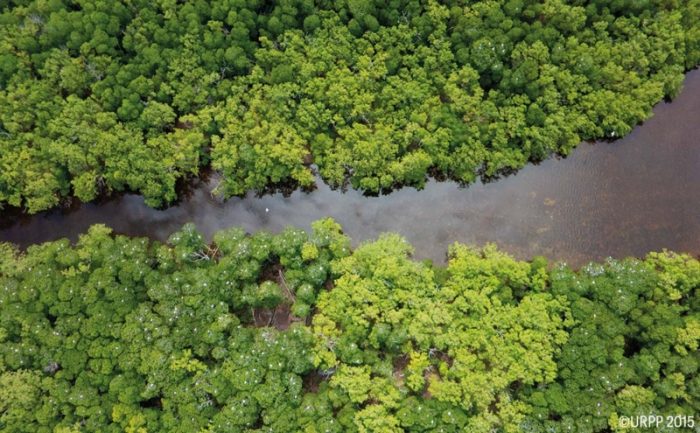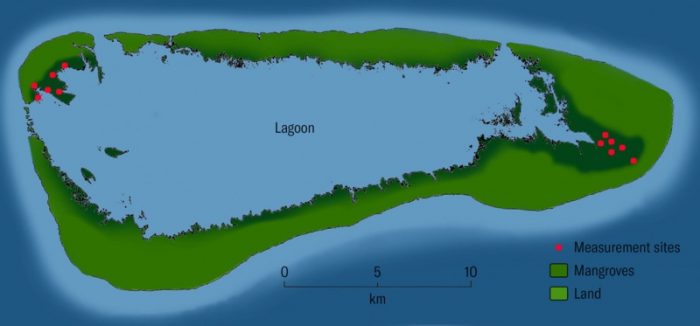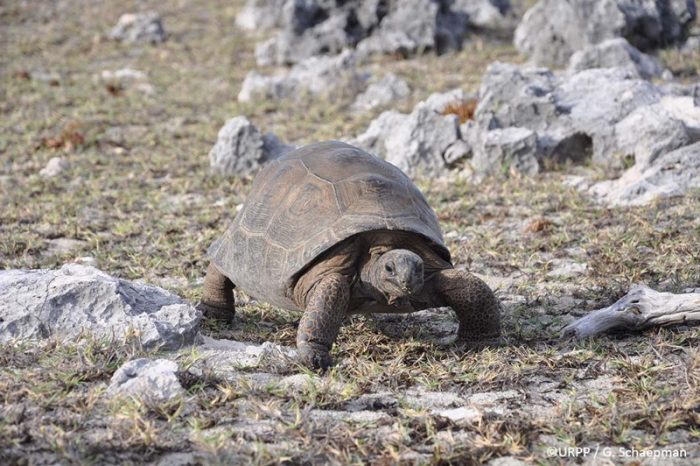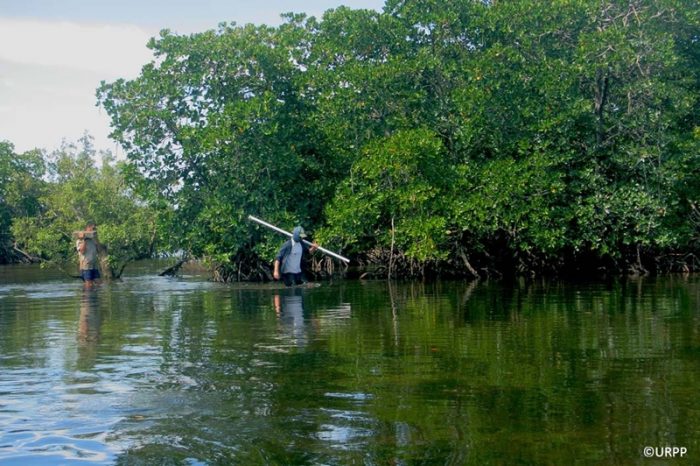KELLER level loggers help researchers to monitor the climate change impact on biodiversity

A science project is using KELLER level loggers to monitor the conditions in the mangrove forests on Aldabra atoll in the Seychelles. It is part of a research programme at the University of Zurich which is trying to gauge the impact of global changes on biodiversity.
The challenge of the ever faster changing environment is threatening biodiversity in different parts of the world. The University Research Priority Programme (URPP) tries to better understand these effects by observing different ecosystems and their correlation to climate change and the condition of the local environment. One of the goals is to identify specific indicators that will allow to better predict future changes on a global scale if combined. Scientists of various fields work together on a number of long-term projects across the globe to get a bigger picture of this trend and possible correlations. In order to do this, there is a lot of data to be collected. This often requires much fieldwork collecting samples or examining wildlife while other parameters can be monitored automatically.

Photo by ©URPP
A Delicate Natural Marvel
One benchmark habitat is Aldabra atoll, which is part of the island state Seychelles located in the Indian Ocean off the coast of Africa. This world-heritage natural reserve is 35 km in length and has no permanent residents. Aldabra was added to the programme as a sample of a pristine ecosystem, largely untouched by human activity. Also, it is highly exposed to rising sea levels with most areas not exceeding eight meters above sea level. The reefs, which form its foundations, boast marine life in all forms. The world’s greatest population of giant tortoises shares the slender ring of land with huge colonies of sea birds. Large parts of the islands are covered in scrub and grasslands. The coastal area is dominated by rocky shores with a few wonderful white beaches while the sheltered interior is partly covered by mangroves.

Mangrove Yoga and Data Collection
Annabelle Constance is part of the URPP GCB science projects concerning Aldabra. She grew up in the Seychelles and has been researching the ecosystem there since 2015. Currently she is doing so as a part of her PhD at the University of Zurich under the supervision of Prof. Gabriela Schaepman-Strub. The main aim is to forecast how this system will behave in future, changed conditions, in order to take precautions to preserve its unique nature. Annabelle is working closely with the Seychelles Islands Foundation (SIF), which manages the reserve and supports scientific work in the area.
As one of the bigger implications of climate change is the rising sea level this is a major focus of the studies on Aldabra as well. The Mangroves consist of shrubs and small trees that are adapted to grow in coastal saline or brackish water. They are directly affected by variation in water level and composition and are a promising indicator of the habitat’s health. Annabelle and the SIF-Team already surveyed more than 1000 trees all over the atoll and will continue monitoring them over the coming years. The scientists jestingly call this tiring fieldwork “mangrove yoga”. To bring the development of the mangroves into context with changes in the surrounding water, exact data about the water level and salinity is needed. Therefore, the team installed level loggers across the coastal area. They needed to be sturdy and reliable. The Swiss pressure sensing specialist KELLER provided the twelve level loggers needed for the science project
Reliable Level Measurement in the Field
After carefully evaluating the requirements of the application and the environmental conditions on site together with the experts at KELLER a suitable solution was found. The data loggers from the 22AA-CTD series register water level, temperature, and electrical conductivity, which corresponds to salt content. This allows the separation of changes in water level related to the incoming tides from changes caused by rainfall.

Photo by ©URPP
The measurement data is collected autonomously and stored in the internal memory. The level probe uses two sensors, one submerged for the level measurement and another one above the water surface for atmospheric pressure. By subtracting the current atmospheric pressure, the level measurement is independent of weather changes and highly accurate. This allows it to detect the slightest changes in sea-level. Because the equipment is constantly exposed to the salty environment it needs to be resistant to corrosion. All outer parts are therefore made of titanium to ensure enduring, trouble-free operations. The electronics were also specifically modified for increased memory capacity to account for the difficulty in accessing the loggers on a regular basis. This allows the logger to record all three parameters for several months before reaching maximum storage capacity.
KELLER‘s level loggers have been set-up in protective installations by Annabelle and the team. Since late 2019 they have been taking measurements every 10 minutes and provide valuable information for the science programme, Annabella’s PhD research and for the SIF management to plan daily activities in the Aldabra reserve. In the long run the insights gained from this scientific work will help preserve delicate eco-systems, counter damage caused by climate-change and hopefully play a part in saving our common habitat on this planet.
For more information, please visit https://keller-druck.com.
News Categories
- » NEWS HOME
- » Automation & Robotics
- » Industry 4.0
- » Material Handling
- » Sensors
- » Quality & Testing
- » Machine Vision
- » Laser & Optics
- » Metalworking
- » Motion Control & Drives
- » Hydraulics & Pneumatics
- » Process Industry
- » Renewable Energy
- » Agriculture
- » Home & Office Furniture
- » Environmental Tech









